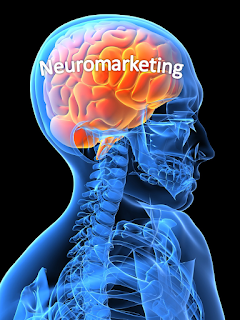I assume
that since you're here then you're interested or working in the marketing
industry. And as most of marketing experts know; neuromarketing is the newest
and most powerful weapon in any marketer's arsenal. This newly forged term
describes the use of neuroscience tools to help determine why consumers buy
what they buy; it allows business owners and marketers to gain insight
into their customers' behavior.
For many
years marketers have done certain things in certain ways, believing them to be
most effective. This conventional wisdom dominated the field of marketing and
advertising for a very long period of time.
In
addition to this new marketing science, there is also a massive evolution in
the arena of digital marketing tools. Among others, there's the science of
landing pages, SEO, PPC, conversion optimization, and a host of other
discoveries about customers and why and where they click. For those who
are able to successfully blend digital innovations with neuromarketing ideas, the
world is your oyster.
So, the
real question is: where do you start? Try these three killer neuromarketing
tips that will totally change the way you do marketing.
1) Affect
as many senses as possible.
The
stronger the sensory experience of a website, the greater the overall impact on
the visitor. If you manage to engage the user's sense of sight, that's good.
But if you require the use of his/her eyes (sense of sight) and ears ears
(sense of hearing), that's even better. Better still, if you can engage the
sense of touch or smell along with the others.
For
example, restaurateurs have found that scent strongly affects human
behavior. If you look at a cinnamon roll, that might be enough to
compel you to purchase it. But if you look at it, and smell the fresh
dough, cinnamon, and brown sugar, you're even more likely to make a purchase.
That's precisely why Cinnabon, a bakery chain, structures their entire store
layout to place the ovens at the entrance where people can smell the cooking
cinnamon rolls.
Why is
this the case? Your senses trigger powerful reactions in your brain.
Recent research shows that the right scent can open people's wallets, project a
sense of comfort and home (think hotels), shorten the time you believe you're
waiting (think banking) or even improve your sense of performance (think gym).
2) Target
emotional responses.
The brain
uses emotions to respond to any event. When you open up your laptop
for work in the morning, your emotions are engaged. When you reach for that
first cup of coffee, emotions are in play. When you meet a colleague after work
for some happy hour drinks, your emotions are still swirling around your limbic
system, affecting what you say, how you say it, and how you behave.
The
portion of the brain responsible for our emotions has has been called the
mammalian brain, or the middle brain. It is the limbic system, and is closely
integrated with the R-Complex, also known as the reptilian brain.
This old
section of the brain is responsible for keeping us alive in a very primitive
sense telling us to breathe, when to eat, and when to seek out a drink of
water. It's also responsible for "flight or flight", a life-saving
instinctual response to danger or uncomfortable situations. The emotions
experienced by the middle or mammalian brain have a direct impact upon the
R-complex/reptilian brain.
The
outward expressions of emotion are more pronounced in some people, but every
human is wired with emotions. These emotions are on all the time, and cannot be
peeled apart from an individual's other behavior. A BusinessPundit article
sums it up succinctly: "In an oversupplied economy, customer feelings
drive purchase decisions and profitability".
Those emotions are
what you must aim to affect in your marketing. Charts, graphs, metrics,
infographics and percentage signs all have their place in marketing. However,
due to the way minds employ emotions to make a decision, that's not all you
should be using. That information, numbers and statistics affect a customer's
rational brain, the neocortex. But other forms of marketing images, videos and
stories elicit a stronger emotional response in the limbic brain.
3) Focus
on relieving pain more than emphasizing pleasure.
One of
the most paradigm-shattering findings of neuromarketing is the concept that
pain is stronger than pleasure in a consumer transaction.
A
traditional marketing approach would tell people all about the pleasures of the
product or service: features, benefits, cost-savings, etc. This is backwards. Because consumers focus more on not getting hurt over the need
to feel great when making decisions.
Pain
trumps gain in a purchase decision. Neuromarketing whiz Christophe Morin's
title is "Chief Pain Officer" because of this underlying premise
of neuromarketing: "Humans are pain-avoiding machines". Neuromarketing
experts say that the brain's pain avoidance response is almost three
times stronger than the brain's pleasure seeking response. Making a purchase
automatically turns on the brain's pain centers (negative
activation). As Seth Godin points out in his joy/cash curve, the most
expensive and least expensive purchases are the most painful.
Most consumer goods or services including what you might be selling on
your website are positioned at the peak of the joy-response section of this
bell curve. Although this is true, you must still overcome a certain amount of
pain in the process.

No comments:
Post a Comment